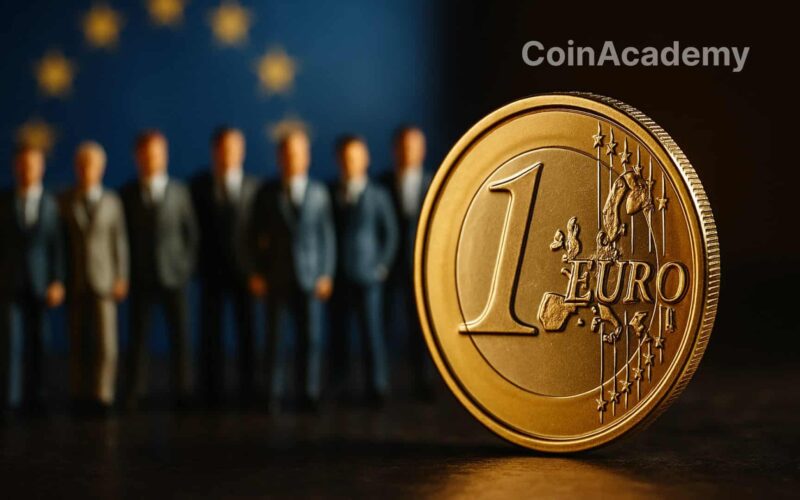Neuf heavyweight European financial institutions are coming together to launch a Euro stablecoin compliant with the MiCA regulations. The goal is clear: to create a credible alternative to American stablecoins and provide Europe with a tool for digital sovereignty in payments.
An unprecedented banking consortium for a Euro stablecoin
The participating players are no small fry: ING, Banca Sella, KBC, Danske Bank, DekaBank, UniCredit, SEB, CaixaBank, and Raiffeisen Bank International. Together, they have established a company in the Netherlands, which will apply for an electronic money establishment license from the Dutch Central Bank.
Europe may be catching up, but not so fast: the first issuance is expected in the second half of 2026. The consortium specifies that other banks may join the project, and a CEO will be appointed soon, subject to regulatory approval.
A response to American dominance
Today, the global stablecoin market remains dominated by Tether (USDT) and Circle (USDC), two American giants. With this project, Europe aims to take back control and establish a standard for digital Euro payments. Instant transactions, reduced fees, 24/7 availability: the stablecoin promises to streamline cross-border payments, supply chain management, and digital asset settlements.
According to the consortium, this initiative is not just a technical innovation: it is part of a broad strategy for European autonomy in payments, a sector considered critical for the economy.
MiCA, a catalyst for trust?
The decision to place this stablecoin within the MiCA regulatory framework (Markets in Crypto-Assets) is significant. Europe wants to demonstrate that it is possible to innovate in digital finance while upholding high standards of transparency and oversight. Each bank will be able to develop its own services around this stablecoin, including digital wallets or custody solutions.
Floris Lugt, Head of Digital Assets at ING and spokesperson for the project, sums up the ambition:
Digital payments are essential for building a new Euro financial infrastructure. The programmability of the blockchain allows for instant and transparent settlements. This is an evolution that must be supported by the entire banking sector, with common standards.
Competition already underway
This project will not be alone in the field. Last week, the Societe Generale’s Forge subsidiary announced the listing of its dollar stablecoin, USDCV, on Bullish Europe. The initiative of the nine banks adds a geopolitical dimension: a battle of Euro and dollar stablecoins, but this time under European banking auspices.
For the crypto markets and institutions alike, the arrival of a MiCA-compliant Euro stablecoin represents a turning point. If the promise is kept, Europe could finally work to catch up and establish a strong alternative to the American giants in the sector.




